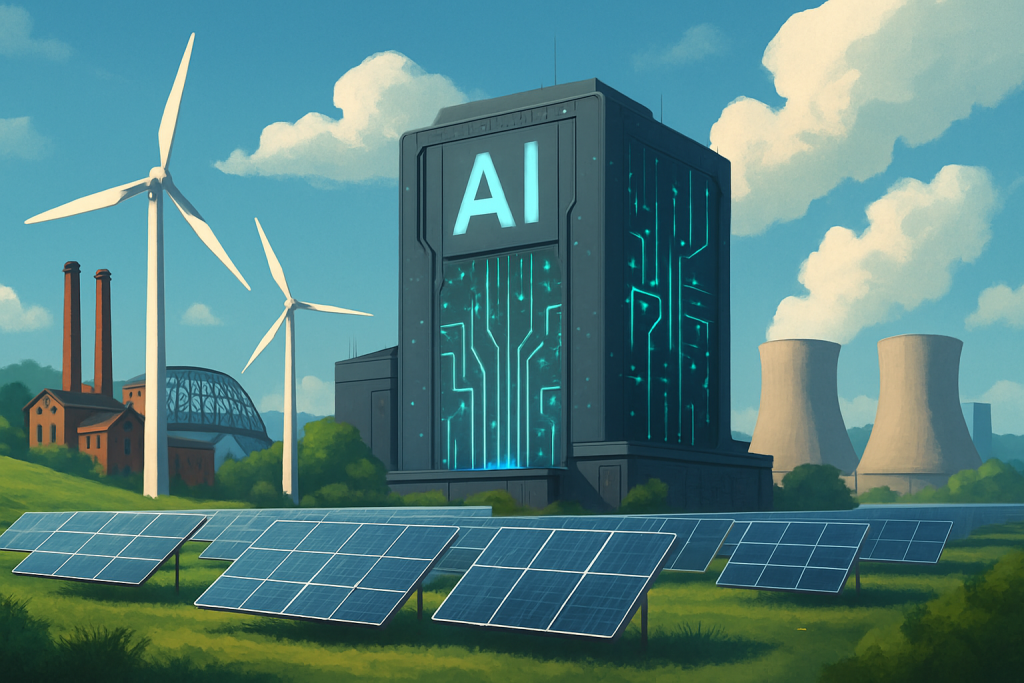The air crackled with anticipation as President Trump, against the backdrop of Carnegie Mellon University’s hallowed halls, dropped a bombshell: a cool $70 billion earmarked for the twin titans of AI and energy. The Pennsylvania Energy and Innovation Summit, orchestrated by Senator Dave McCormick, became ground zero for what could be a tectonic shift in the American tech landscape. Think of it as the government’s version of Tony Stark unveiling a new Iron Man suit, only instead of repulsor rays, we’re talking algorithms and gigawatts.
But why now? Why this sudden surge of investment? To understand, you’ve got to rewind a bit. The U.S. and China have been locked in a silent but fierce AI arms race, a digital Cold War where victory means economic dominance and technological supremacy. Washington knows it can’t afford to fall behind. And AI, as any gamer knows, needs serious juice. All those neural networks crunching numbers require data centers the size of small towns, sucking up power like a black hole. Hence, the marriage of AI and energy, a shotgun wedding born of necessity.
The $70 billion isn’t just a blank check, though. It’s a carefully orchestrated symphony of investments, hitting several key notes. First, and perhaps most obviously, is the direct boost to AI development. This means more funding for research, more resources for startups, and a general acceleration of the innovation pipeline. It’s like dumping fertilizer on a field of digital seedlings, hoping to cultivate the next generation of AI breakthroughs.
Then comes the infrastructure piece, the unglamorous but utterly essential backbone of the AI revolution: data centers. CoreWeave, a name that might not be on everyone’s lips yet but soon will be, is already stepping up, committing $6 billion to build a massive AI data center right in Pennsylvania. We’re talking 100 megawatts of raw computational power initially, with plans to crank it up to 300 MW. That’s enough to make Doc Brown’s DeLorean jealous. And with it comes jobs- 600 during construction and 70 full-time gigs once it’s up and running.
But all that processing power needs… well, power. And that’s where the energy infrastructure component comes in. This isn’t just about flipping a switch; it’s about finding sustainable, reliable sources of energy to fuel the AI revolution. Enter Microsoft and Constellation Energy, who are reportedly kicking the tires on restarting the mothballed Three Mile Island nuclear facility. Yes, that Three Mile Island. It’s a bold move, a high-stakes gamble on nuclear power’s redemption, but it underscores the sheer scale of the energy challenge facing the AI industry. It’s like trying to power a city with a AA battery- you need something bigger, something more robust.
Finally, and perhaps most crucially, is the investment in workforce development. All the fancy algorithms and powerful data centers in the world won’t matter if there aren’t enough skilled people to run them. That’s why Google’s partnership with Virginia Governor Glenn Youngkin to offer free and low-cost AI certification courses to 10,000 Virginians is so vital. It’s about building a new generation of AI engineers, data scientists, and technicians, ensuring that the U.S. has the human capital to compete in the global AI arena. It’s the “teach a man to fish” proverb, but instead of fish, it’s Python code.
The Ripple Effects: Who Wins, Who Loses?
The immediate winners are clear: AI startups, data center operators, energy companies, and aspiring AI professionals. Pennsylvania, with its industrial heritage and strategic location, is poised to become a major AI hub, a Rust Belt renaissance fueled by silicon and electricity. But the implications extend far beyond the Keystone State.
The tech giants- Google, Microsoft, Amazon- stand to benefit immensely, as they already have the infrastructure and expertise to capitalize on this new wave of investment. However, smaller players could also see opportunities to carve out niches and disrupt the established order. It’s a classic David vs. Goliath scenario, but with algorithms instead of slingshots.
But what about the potential downsides? The environmental impact of all those data centers is a legitimate concern. More AI means more energy consumption, which means more carbon emissions, unless we can find truly sustainable power sources. The Three Mile Island gambit, while potentially a solution, also raises questions about nuclear safety and waste disposal. It’s a delicate balancing act, trying to power the future without jeopardizing the planet.
And then there’s the ethical dimension. As AI becomes more powerful and pervasive, we need to grapple with thorny issues like bias, privacy, and job displacement. Who’s responsible when an AI makes a mistake? How do we prevent AI from perpetuating existing inequalities? These are questions that require careful consideration and robust regulatory frameworks. It’s the “with great power comes great responsibility” mantra, but applied to artificial intelligence.
The Bigger Picture: A New Era of Innovation?
President Trump’s $70 billion investment is more than just a spending bill; it’s a statement of intent. It signals that the U.S. is serious about maintaining its leadership in AI, even if it means making bold, potentially controversial decisions. It’s a recognition that AI is not just a technological trend; it’s a fundamental force that will reshape our economy, our society, and our future.
Whether this investment will ultimately succeed in achieving its goals remains to be seen. But one thing is clear: the AI revolution is here, and it’s only going to accelerate. Buckle up, folks, because the ride is just beginning.
Discover more from Just Buzz
Subscribe to get the latest posts sent to your email.


